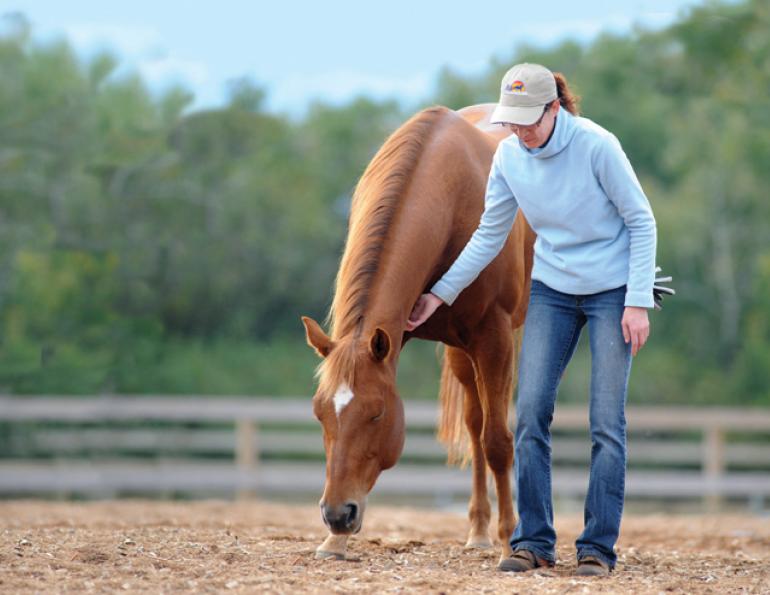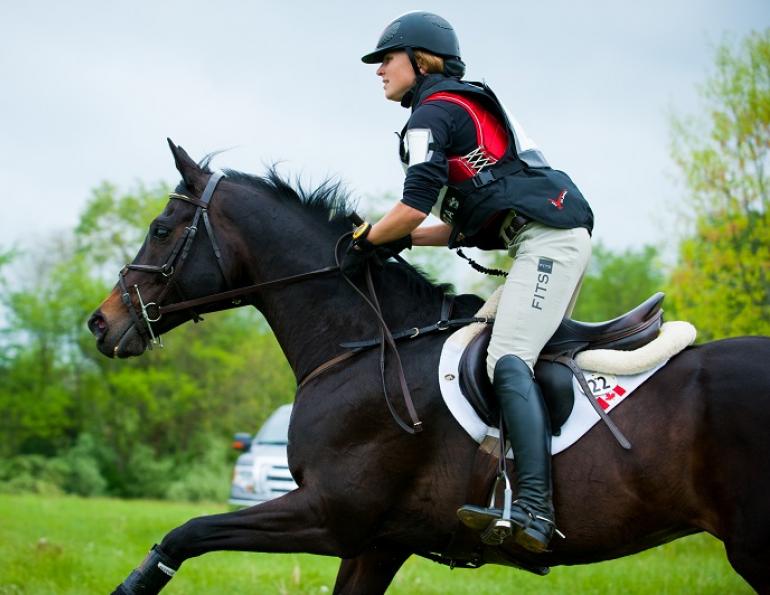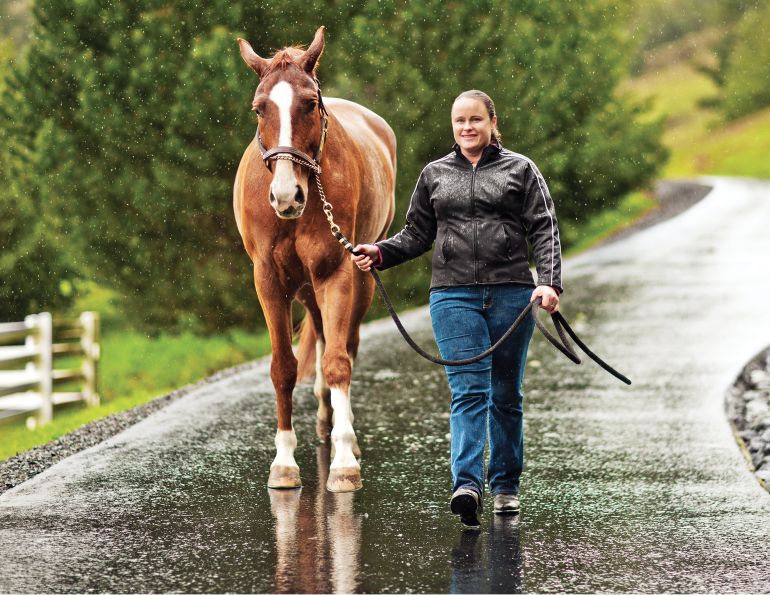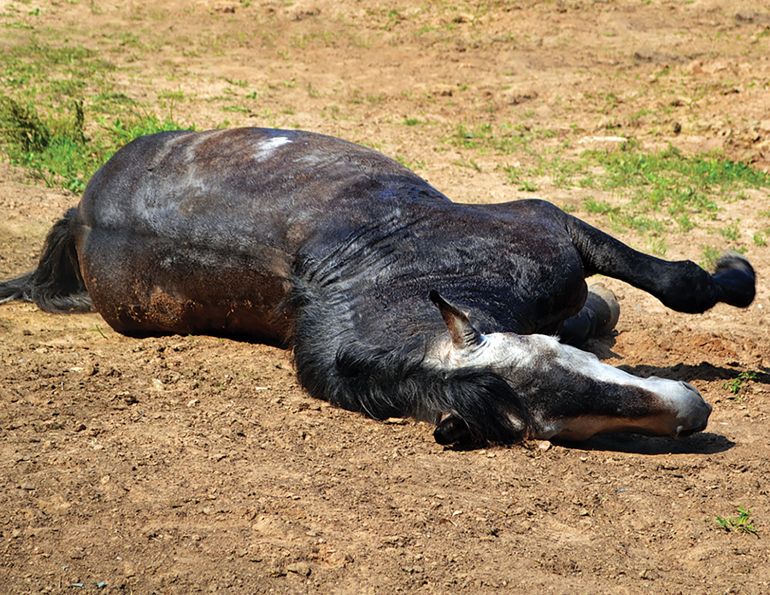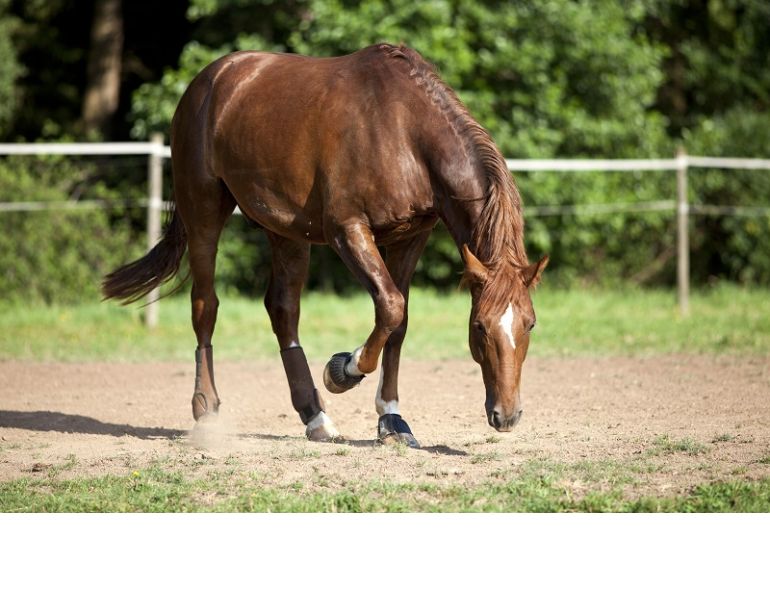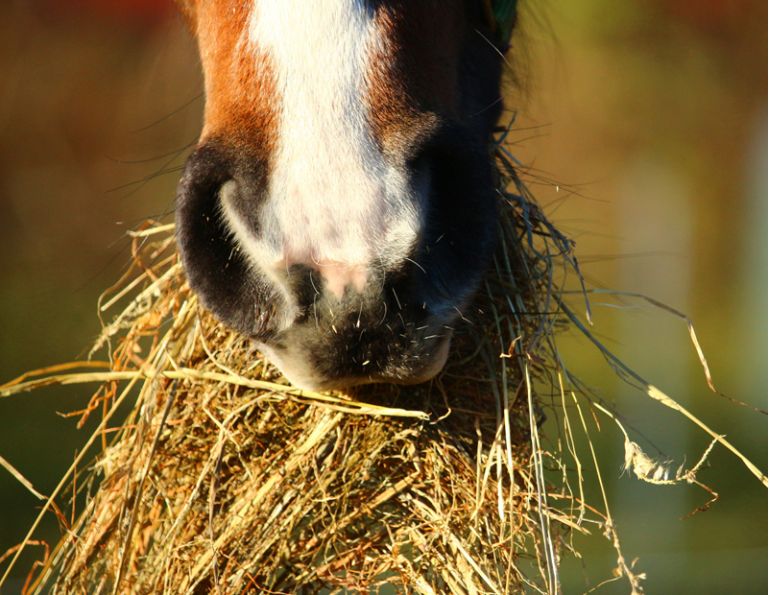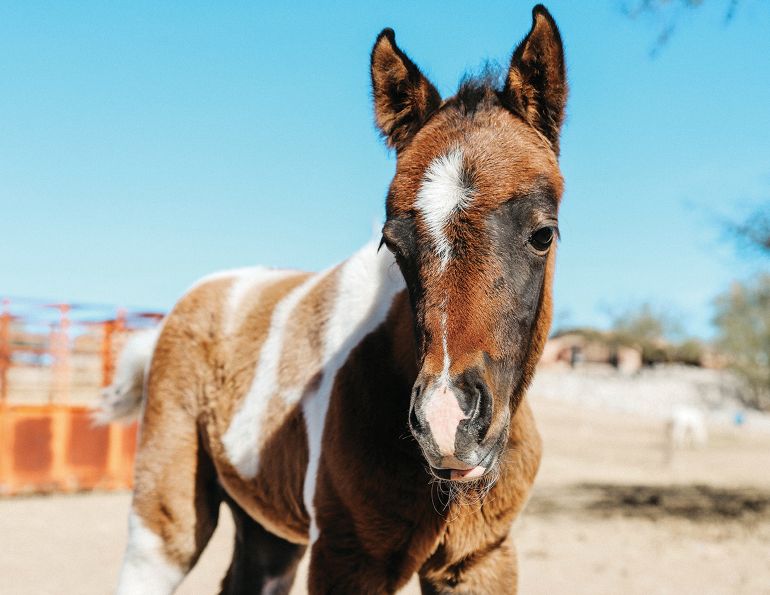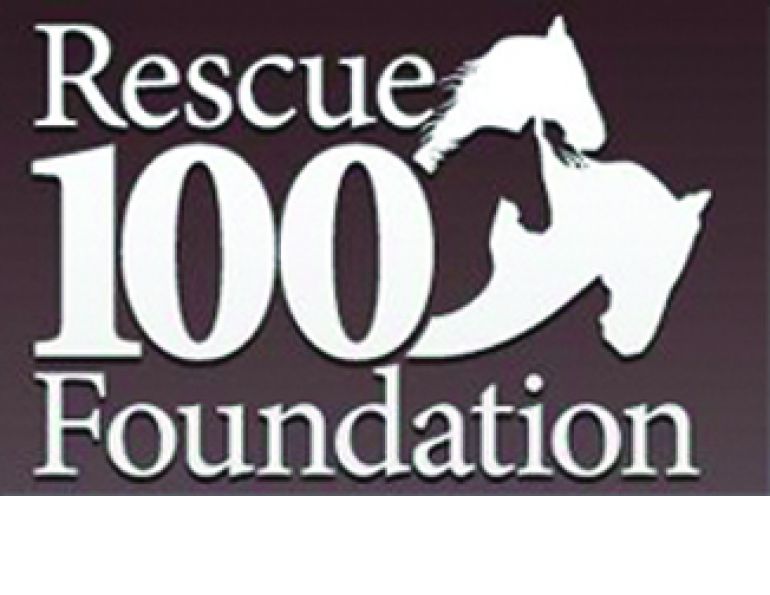Equine Emergency First Aid
By Heather Davis
We spend thousands of dollars on the right horse. We write cheques to trainers and buy the newest supplements, better blankets, grooming supplies, and saddles. We drive for hours to attend clinics, trade shows, and competitions. We brush our dreams into our horses’ coats and wipe our tears with their manes.
But what do you do when you are faced with a health emergency with your horse? Would you be prepared? Many owners don’t feel they are equipped physically – and emotionally – to deal with a first aid emergency situation involving their horse, be it wire cuts, trailering injuries, stings, burns, puncture wounds, digestive distress, or something less dramatic but potentially just as serious.
Dealing with an emergency may not always be as obvious as a profusely bleeding cut. It’s your job to recognize when something isn’t right with your horse, even if the signs are subtle, and this means you need to know your horse.
Horses show a wide range of recognizable symptoms when they are in pain, including:
- Restlessness
- Sweating
- Lying down more than usual
- Depression with lowered head
- Rigid stance
- Anxious appearance
- Dilated pupils or glassy eyes
- Flared nostrils
- Muscle tremors
- Increased respiratory or pulse rate
- Reluctance to move
- Limbs held in unusual positions
- Abnormal gait
- Reduced appetite
- Weight loss
- Alterations in weight bearing, including weight-shifting between limbs
- Signs of colic: rolling, pawing, lying on their side, flank watching, kicking their abdomen, yawning, tooth grinding, a “saw horse” stance, and sweating
If your horse is exhibiting one or more of these symptoms, it might be time to check his vital signs (see Table 1 below: Checking Your Horse’s Vital Signs). Vital signs provide critical information about the health status of your horse. For example, an elevated temperature could be indicative of infection, while a lowered temperature may indicate shock. No matter what your horse’s vital signs are telling you, this is essential information to provide when contacting your vet.
Checking Your Horse's Vital Signs
Heart Rate
- Normal: 30-40 beats per minute at rest
- Abnormal & Concerning: More than 60 beats per minute at rest; weak or irregular heartbeat
- To Measure: Measure using a stethoscope or your fingers against the facial artery just under the jawbone behind the cheek.
Respiration
- Normal: 12-20 breaths per minute
- Abnormal & Concerning: Foam or food in nostrils; Short, quick breaths; Excessive rib movements
- To Measure: Measure by counting either inhalations or exhalations
Temperature
- Normal: 37.5-38.6 degrees C (99.5-101.5 degrees F)
- Abnormal & Concerning: Higher than 39.5 degrees C (103 degrees F); Decrease in temperature
- To Measure: Measure using (preferably) an analog thermometer. Shake the thermometer down, apply lubricant, and insert into the anus. Move the tip of the thermometer off the side of the colon wall. Wait three minutes and remove.
Hydration
Capillary Refill Time
- Normal: A refill time of up to 1.5 seconds
- Abnormal & Concerning: A refill time longer than 2 seconds
- To Measure: Press your thumb firmly against the gum for two seconds to “blanch” the area. Release and time how long it takes the gum to return to its original pink colour.
Skin “Tent” Test
- Normal: A fold that flattens in 1 second
- Abnormal & Concerning: A fold that remains or flattens slowly
- To Measure: Pull up a fold or “tent” of skin on the neck. Release and time how long it takes the fold to flatten.
Intestinal Sounds
- Normal: A cacophony of sounds on both sides
- Abnormal & Concerning: Faint or infrequent sounds
- To Measure: Using a stethoscope or your ear, listen against the ribcage for gut sounds.
Before you check his vital signs, make sure you know what is normal for your horse. A “normal” temperature for one horse may be 37.5 degrees Celsius (99.5°F), while his pasture mate may run a “normal” temperature of 38.3 degrees Celsius (101°F). If you don’t know what is normal for your horse, how can you know when something is abnormal? Take a baseline of all your horse’s vital signs under similar conditions four times per year and chart the results to use as a quick reference when you’re concerned about your horse. Also record your horse’s weight at the same time; this information is useful when determining dosages for medications (see sidebar: Estimating Your Horse’s Weight). Post the chart in a location where it can be accessed by other people who may be looking after your horse.

Photo (above): When taking your horse’s temperature, stand close to the horse’s hip, never directly behind the hindquarters where you could be seriously injured if the horse were to kick out. Photo courtesy of Equi-Health Canada
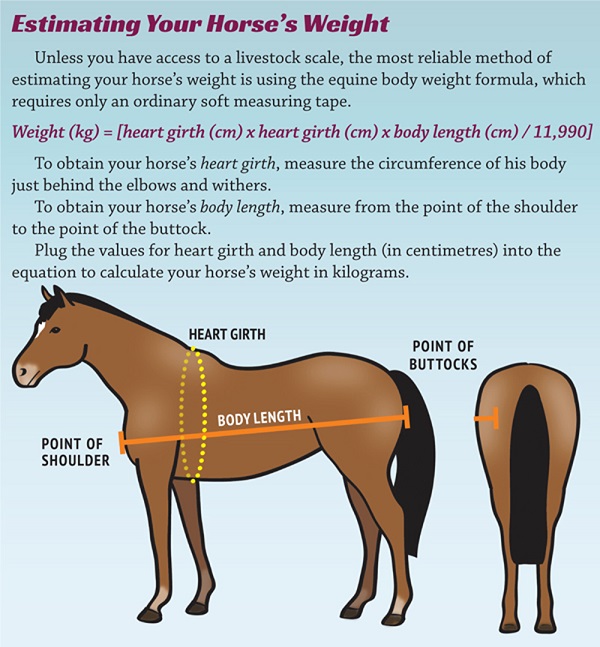
Equine911-EstimateHorsesWeight – referred to at end of the first section, so place just before “Four Basic First Aid Rules”
Four Basic First Aid Rules
Equine emergency first aid may be required in any number of situations. As all horse owners know, our beloved equines find all kinds of ways to get themselves into trouble. You might arrive at the barn in the morning to find bites and cuts, a heel bulb wound, an impaled branch, or an eye swollen shut. You could find your horse cast in the stall, or stretched out and kicking at his stomach with colic.
Whatever the situation, always follow these four basic rules of equine emergency first aid:
Remain calm. Your attitude can have a great calming effect on a horse that is bleeding profusely, entangled in wire, or otherwise in distress. If a horse senses any panic on your part, his heart rate will increase which can cause wounds to bleed faster, and he may flail harder. The worse the situation is, the calmer your demeanour should be.

Photo (above) - Horses can find all kinds of ways to get themselves into trouble. Whatever the emergency situation, it is important that you remain calm to avoid adding to the horse’s panic and so that you can better assess the situation and take appropriate action. Photo credit: Denise Pisarski
Identify the problem. What happened? Is the horse in danger or at risk of further injury? Are there any humans injured or in danger?
Assess the situation. Is the horse breathing? Is there any bleeding, and if so, how much and from where? Are there any injuries to the body, such as broken bones or major strains?
Take action. SAFELY get the horse and any humans out of danger. Stop any bleeding, minimize shock, and contact your veterinarian. Be prepared to provide a description of your location, any relevant history, and the horse’s vital signs as needed.
Common Emergencies
Different types of emergencies require different actions, so a basic knowledge of how to deal with some of the more common emergency situations you might face as a horse owner is imperative.
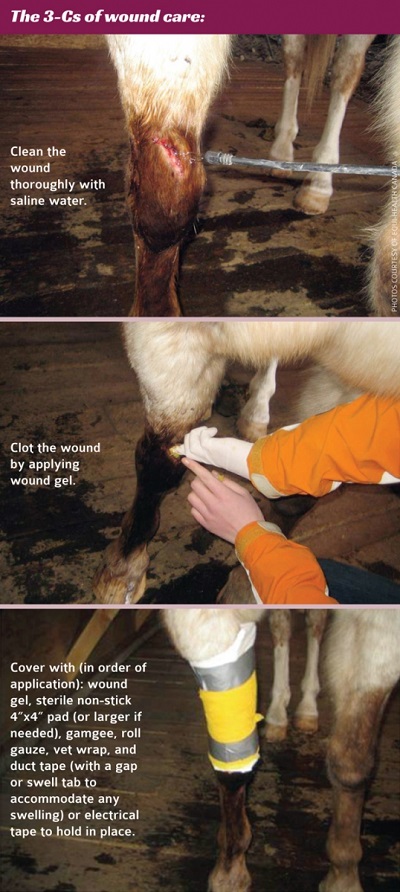
Lacerations: Cuts and lacerations come in all shapes and sizes. Some are superficial, others dangerously deep. If your horse has a cut, there are three priorities of action which we call the 3-Cs: Clean, Clot, and Cover. A clean wound will heal faster with less chance of infection. If your horse has a cut, flush it thoroughly with saline water. That being said, if the horse has an arterial bleed, clotting the wound takes priority. Layer bandage upon bandage and apply pressure to stop the bleeding while you wait for the vet to arrive. Finally, cover the wound with a bandage to help keep the wound clean as it heals.
Puncture Wounds: Punctures are tricky and some of the most dangerous wounds to deal with. If your horse has punctured his hide and the foreign body is still embedded, leave it in and let your vet remove it. If it appears as though there is nothing in the puncture, clean the wound thoroughly and watch for signs of infection. Swelling of the area, pain, and/or elevated temperature are strong indicators that there is a problem.
Digestive Distress: Digestive emergencies are some of the most dangerous situations for your horse’s health and should always be handled with a phone call to the veterinarian first.
Colic is usually the word that strikes the most fear in the heart of every horse owner. You can walk into any room of horse people and meet at least one who has lost a horse to colic. When it comes to colic, the key is not to wait and see what happens, but to call the vet for an immediate appointment.
By definition, colic is abdominal pain. But the reality is much more frightening. Colic in horses can range in severity from mild digestive discomfort to fatal intestinal obstruction. It has many potential causes, including parasites, spoiled feed or improper feeding, stress, medications, and cold water given to a hot horse.
A colicky horse may stretch out, paw, roll, kick at his stomach, or lie down and not want to get up. Additionally, a horse with colic may not have the audible gut sounds on both sides that are present in a healthy horse. A vet call is always warranted for colic, whether the symptoms are mild or severe. Many cases of colic might appear to be simple gas colic that is easing up, but could turn out to actually be a twisted intestine or serious impaction, both of which are cause for immediate surgery if your horse is to be saved.If you suspect colic, immediately call your vet and then take action. If you are taking your horse to the vet, immediately load the horse into the trailer. Horses almost always poop in the trailer and if your horse passes manure, your anxiety may be somewhat alleviated by knowing it’s not impaction colic.
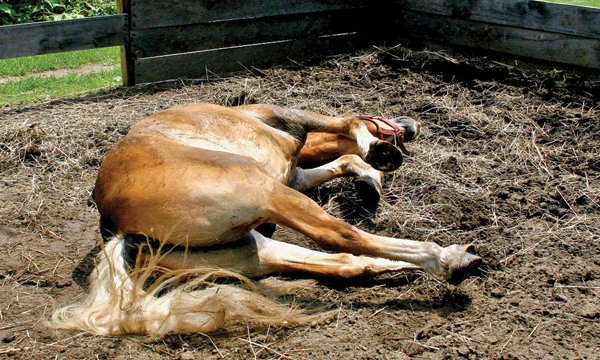
Photos (above and below) - Because colic in horses can range in severity from mild abdominal discomfort to fatal intestinal obstruction, every horse owner should be familiar with the more common symptoms, including pawing, rolling, kicking at the stomach, and a “saw horse” stance. Photo credit (above): ©Liz West/Flickr; Photo credit (below): Courtesy of Equi-Health Canada
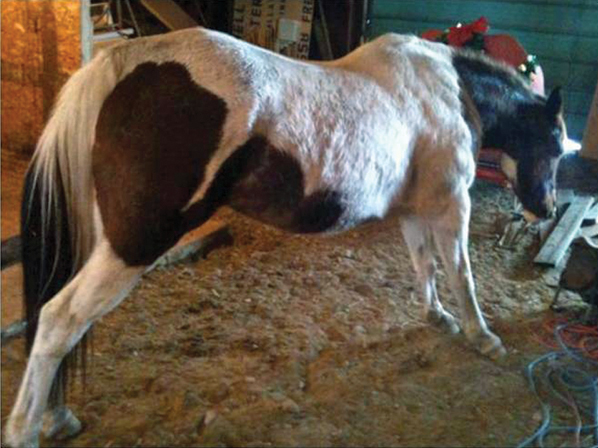
If the vet is en route to your location, walking the horse, while it may seem a mundane task, can be vital to his survival. Keep the horse on his feet if at all possible, as a horse that goes down and thrashes is at higher risk of twisted gut. Remove all water and foodstuffs, and take the horse’s vital signs. Sweat spots and a dropping temperature may be indicative of shock. You should also be prepared to give your vet a complete history and inform him or her of any changes in feed, environment, or routine that may have been a contributing factor.
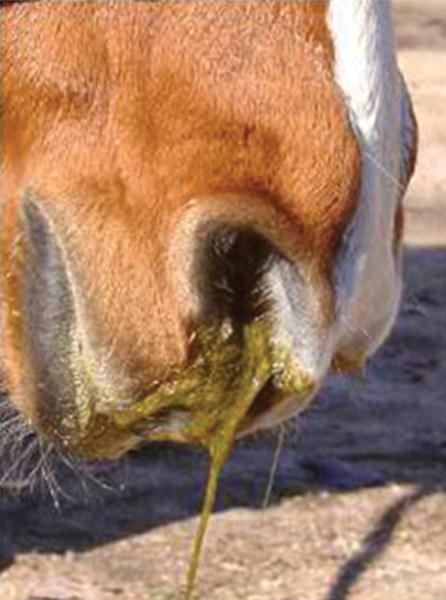
Photo (above) - A case of choke can be visually distressing for an owner, as it usually presents with substance flowing from the horse’s nose and mouth. Photo courtesy of the Horse Protection Society of North Carolina

Choke is another visually distressing case, as it usually presents with substance pouring from the horse’s nose and mouth. Choke in horses refers to an esophageal obstruction, generally composed of partially chewed foodstuffs. So, while the horse is still able to breathe, it cannot swallow. Horses with choke may become dehydrated and, if saliva and food accumulate in the pharynx, they can aspirate food material into the lungs.
If you suspect choke, call your vet immediately. Remove all food and water and try to keep your horse calm and quiet while you wait for the vet to arrive. Ninety percent of choke cases clear on their own but the 10 percent that don’t are a serious risk to your horse.
Equine First Aid Kit
No matter what the emergency, it’s important to be prepared. Keep a well-stocked equine first aid kit in your barn, trailer, and saddle bags (see sidebar).
Lastly, when in doubt, call your vet. Always. And if you’re not comfortable administering first aid to your horse, talk to your vet, call a knowledgeable friend, or take a basic equine first aid course. Your horse is worth it.
Heather Davis is the CEO of Equi-Health Canada, an organization dedicated to training horse owners and lovers in equine emergency first aid preparedness.
For more information, visit www.equihealthcanada.com.
This article was originally published in the March 2014 issue of Canadian Horse Journal.
Main Photo - As an owner, it’s your job to recognize when something isn’t right with your horse. Sometimes the warning signs may be subtle, which is why it’s absolutely critical that you know what behaviour is normal for your horse. Photo Credit: Robin Duncan Photography



